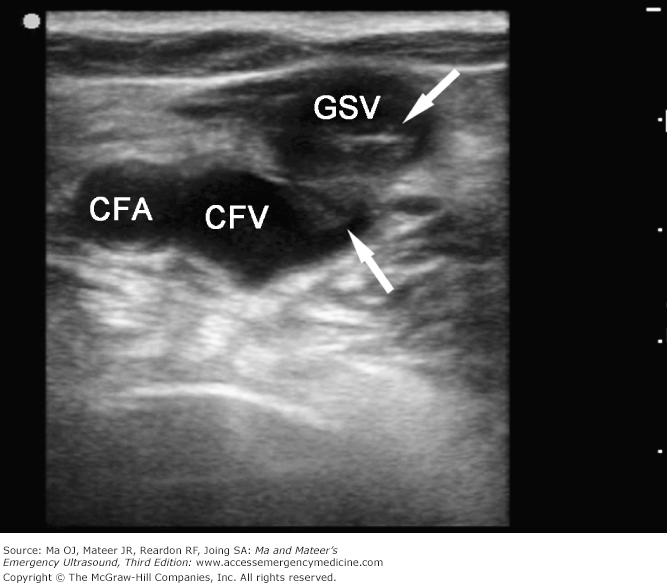Modifier – as the name suggest a modifier will modify a service / procedure or an item under certain circumstances for appropriate reimbursement. Modifiers may add information or change the description according to the physician documentation to give more specificity for the service or procedure rendered. Appending of an appropriate modifier will effectively respond to claim reimbursement.
Modifiers are two-digit codes and are categorized into two levels:
Level I CPT Modifiers: Normally known as CPT Modifiers and consists of two numeric digits and are updated annually by AMA – American Medical Association.
-25, -27, -50, -52, -58, -59, -73, -74, -76, -77, -78, -79, -91
Level II HCPCS Modifiers: Normally known as HCPCS Modifiers and consists of two digits (Alpha / Alphanumeric characters) in the sequence AA through VP. These modifiers are annually updated by CMS – Centers for Medicare and Medicaid Services.
-CA, -E1, -E2, -E3, -E4, -FA, -FB, -FC, -F1, -F2, -F3, -F4, -F5, -F6, -F7, -F8, -F9, -GA, -GG, -GH, -GY, -GZ, -LC, -LD, -LT, -QL, -QM, -RC, -RT, -TA, -T1, -T2, -T3, -T4, -T5, -T6, -T7, -T8, -T9
List of CPT and HCPCS Modifiers
21 Prolonged Evaluation and Management Services
22 Unusual Procedural Services
23 Unusual Anesthesia
24 Unrelated Evaluation and Management Service by the Same Physician During a Postoperative Period
25 Significant, Separately Identifiable Evaluation and Management Service by the Same Physician on the Same Day of the Procedure or Other Service
26 Professional Component
32 Mandated Services
47 Anesthesia by Surgeon
50 Bilateral Procedures
51 Multiple Procedures
52 Reduced Services
53 Discontinued Procedure
54 Surgical Care Only
55 Postoperative Management Only
56 Preoperative Management Only
57 Decision for Surgery
58 Staged or Related Procedure or Service by the Same Physician During the Postoperative Period
59 Distinct Procedural Service
62 Two Surgeons
63 Procedure Performed on Infants less than 4 kg.
66 Surgical Team
76 Repeat Procedure by Same Physician
77 Repeat Procedure by Another Physician
78 Return to the Operating Room for a Related Procedure During the Postoperative Period
79 Unrelated Procedure or Service by the Same Physician During the Postoperative Period
80 Assisted Surgeons
81 Minimum Assistant Surgeons
82 Assistant Surgeon (when qualified surgeon no available)
90 Reference (Outside) Laboratory
91 Repeat Clinical Diagnostic Laboratory Test
99 Multiple Modifiers
P1 A normal healthy patient
P2 A patient with mild systemic disease
P3 A patient with severe systemic disease
P4 A patient with severe systemic disease that is a constant threat to life
P5 A moribund patient who is not expected to survive without the operation
P6 A declared brain-dead patient whose orgins are being removed for donor purposes
27 Multiple Outpatient Hospital E/M Encounters on the Same Date
73 Discontinued Out-Patitent Hosptial/Amburlatory Surgery Center (ASC) Procedure Prior to the
Administration of Anesthesia
74 Discontinue Out-Patient Hospital/Ambulatory Surgery Cener (ASC) Procedure After
Administration of Anesthesia
E1 Upper left, eyelid
E2 Lower left, eyelid
E3 Upper right, eyelid
E4 Lower right, eyelid
F1 Left hand, second digit
F2 Left hand, third digit
F3 Left hand, fourth digit
F4 Left hand, fifth digit
F5 Right hand, thumb
F6 Right hand, second digit
F7 Right hand, third digit
F8 Right hand, fourth digit
F9 Right hand, fifth digit
FA Left hand, thumb
GG Performance and payment of a screening mammogram and diagnostic mammogram on the same
patient, same day
GH Diagnostic mammogram converted from screening mammogram on same day
LC Left circumflex coronary artery (Hospitals use with code 92980-92984, 92995, 92996
LD Left anterior descending coronary artery (Hospitals use with codes 92980-92984, 92995, 92996
LT Left side (used to identify procedures performed on the left side of the body)
QM Ambulance service provided under arrangement by a provider of services
QN Ambulance service furnished directly by a provider of services
RC Right coronary artery (hospital use with codes 92980-92984, 92995, 92996
RT Right side (used to identify procedures performed on the right side of the body
T1 Left foot, second digit
T2 Left foot, third digit
T3 Left foot, fourth digit
T4 Left foot, fifth digit
T5 Right foot, great toe
T6 Right foot, second digit
T7 Right foot, third digit
T8 Right foot, fourth digit
T9 Right foot, fifth digit
TA Left foot, great
AA- Anesthesia services performed by anesthesiologist.
AD- Medical supervision by a physician, more than four concurrent
anesthesia procedures.
AH- Clinical Psychologist (CP) Services. [Used when a medical group employs a CP and bills for the CP’s service.
AJ- Clinical Social Worker (CSW). [Used when a medical group employs a
CSW and bills for the CSW’s service.
AM- Physician, team member service
AS- Physician Assistant, Nurse Practitioner, or Clinical Nurse Specialist services for assistant at surgery.
AT- Acute treatment. [This modifier should be used when reporting a spinal manipulation service
CC- Procedure code changed. [This modifier is used when the submitted
procedure code is changed either for administrative reasons or because an incorrect code was filed.
G1- Most recent urea reduction ratio (URR) reading of less Than 60.
G2- Most recent urea reduction ratio (URR) reading of 60 to 64.9.
G3- Most recent urea reduction ratio (URR) of 65 to 69.9.
G4- Most recent urea reduction ratio (URR) of 70 to 74.9.
G5- Most recent urea reduction ratio (URR) reading of 75 or greater.
G6- ESRD patient for whom less than six dialysis sessions have been provided in a month.
G7- Pregnancy resulted from rape or incest or pregnancy certified by physician as life threatening.
G8- Monitored Anesthesia Care (MAC) for deep complex, complicated, or markedly invasive surgical procedure.
G9- Monitored Anesthesia Care (MAC) for patient who has history of severe cardio- pulmonary condition.
GA- Waiver of Liability Statement on file. (Effective for dates of service on or after October 1, 1995, a physician or supplier should use this modifier
to note that the patient has been advised of the possibility of noncoverage.)
GB- Claim being re-submitted for payment because it is no longer covered under a global payment demonstration.
GC- This service has been performed in part by a resident under the
direction of a teaching physician.
GE- This service has been performed by a resident without the presence of a teaching physician under the primary care exception.
GJ- “Opt Out” physician or practitioner emergency or urgent service.
GM- Multiple patients on one ambulance trip.
GN- Service delivered personally by a speech-language pathologist or under an outpatient speech-language pathology plan of care.
GO- Service delivered personally by an occupational therapist or under an outpatient occupational therapy plan of care.
GP- Service delivered personally by a physical therapist or under an outpatient physical therapy plan of care.
GQ- Via asynchronous telecommunications system
GV- Attending physician not employed or paid under arrangement by the patient’s hospice provider.
GW- Service not related to the hospice patient’s terminal condition.
GY- Item or service statutorily excluded or does not meet the definition of any Medicare benefit.
GZ- Item or service expected to be denied as not reasonable and necessary.
KO- Single drug unit dose formulation.
KP – First drug of a multiple drug unit dose formulation.
KQ- Second or subsequent drug of a multiple drug unit dose formulation.
LC- Left circumflex coronary artery.
LD- Left anterior descending coronary artery.
LR- Laboratory round trip.
LS- FDA-monitored intraocular lens implant.
LT- Left Side. (Used to identify procedures performed on the left side of the body.)
Q3- Live kidney donor – Services associated with postoperative medical complications directly related to the donation.
Q4- Service for ordering/referring physician qualifies as a service exemption.
Q5- Service furnished by a substitute physician under a reciprocal billing arrangement.
Q6- Service furnished by a locum tenens physician.
Q7- One Class A Finding.
Q8- Two Class B findings.
Q9- One Class B and Two Class C findings.
QA- FDA investigational device exemption.
QB- Physician providing service in a rural Health Professional Shortage area
GT- Via interactive audio and video telecommunication systems.
QC- Single channel monitoring.
QD- Recording and storage in solid state memory by digital recorder.
QK- Medical direction of two, three, or four concurrent anesthesia procedures involving qualified individuals.
QL- Patient pronounced dead after ambulance called.
QM- Ambulance service provided under arrangement by a provider of services.
QN- Ambulance service furnished directly by a provider of services.
QS- Monitored anesthesia care service.
QT- Recording and storage on a tape by an analog tape recorder.
QU- Physician providing service in an urban Health Professional Shortage Area (HPSA).
QV- Item or service provided as routine care in a Medicare qualifying clinical
trial.
QW- Clinical Laboratory Improvement Amendment (CLIA) waived test (modifier used to identify waived tests).
QX- CRNA service with medical direction by a physician.
QY- Anesthesiologist medically directs one CRNA.
QZ- CRNA service without medical direction by a physician.
RC- Right coronary artery.
RT- Right Side (used to identify procedures performed on the right side of the body).
SF- Second opinion ordered by a Professional Review Organization (PRO)
SG- Ambulatory Surgical Center (ASC) facility service.
TC- Technical Component.
U1 Perinatal care provider completed prenatal or postpartum depression screening and behavioral health need identified (positive screen)
U2 Perinatal care provider completed prenatal or postpartum depression screening with no behavioral health need identified (negative screen)
U3 Pediatric provider completed postpartum depression screening during well-child or infant episodic visit and behavioral health need identified (positive screen)
U4 Pediatric provider completed postpartum depression screening during well-child or infant episodic visit with no behavioral health need identified (negative screen)
HQ Group counseling, at least 60-90 minutes
TF Intermediate level of care, at least 45 minutes
HA Service Code 90791 must be accompanied by this modifier to indicate that the Child and Adolescent Needs and Strengths is included in the assessment. This modifier may be billed only by psychiatrists.
PA Surgical or other invasive procedure on wrong body part
PB Surgical or other invasive procedure on wrong patient
PC Wrong surgery or other invasive procedure on patient
PT modifier – Colorectal cancer screening test; converted to diagnostic test or other procedure.
Modifier Usage Guidelines
To ensure you receive the most accurate payment for services you render, Blue Cross recommends using modifiers when you file claims. For Blue Cross claims filing, modifiers, when applicable, always should be used by placing the valid CPT or HCPCS modifier(s) in Block 24D of the CMS-1500 claim form. A complete list of valid modifiers is listed in the most current CPT or HCPCS code book. Please ensure that your office is using the current edition of the code book reflective of the date of service of the claim. If necessary, please submit medical records with your claim to support the use of a modifier.
Please use the following tips to avoid the possibility of rejected claims:
• Use valid modifiers. Blue Cross considers only CPT and HCPCS modifiers that appear in the current CPT and HCPCS books as valid.
• Indicate the valid modifier in Block 24D of the CMS-1500. We collect up to four modifiers per CPT and/or HCPCS code.
• Do not use other descriptions in this section of the claim form. In some cases, our system may read the description as a set of modifiers and this could result in lower payment for you.
• Avoid excessive spaces between each modifier.
• Do not use dashes, periods, commas, semicolons or any other punctuation in the modifier portion of Block 24D.
Most Used Modifier with detailed description
22—Increased Procedural Services: Documentation is required when billing with this modifier. A short explanation of why this modifier was applied will also help expedite the processing of claims.
24—Unrelated E&M Service by Same Physician During a Postoperative Period: Used when a physician performs an E&M service during a postoperative period for a reason(s) unrelated to the original procedure.
25—Significant, Separately Identifiable E&M Service by the Same Physician on the Same Day of the Procedure or Other Service: Used by provider to indicate that on the same date of service, the provider performed two significant, separately identifiable services that are not “unbundled”.
26 or PC—Professional Component: Certain procedures are a combination of a physician component and a technical component, and this modifier is used when the physician is providing only the interpretation portion. TC—Technical Component: Certain procedures are a combination of a provider component and a technical component, and this modifier is used when the provider is performing only the technical portion of a service.
32—Mandated Services: Services related to mandated consultation and/or related services (e.g., third party payer, governmental, legislative, or regulatory requirement) may be identified by adding modifier 32 to the basic procedure.
47—Anesthesia by Surgeon: Regional or general anesthesia provided by a surgeon may be reported by adding this modifier to the surgical procedure. Amount allowed is 25% of the surgical procedure allowance.
82 Insurance Health Plans Revised September 9, 2016. Replaces all prior versions.
62—Two Surgeons (MD, DMD, DO): When two surgeons work together as primary surgeons performing distinct part(s) of a single procedure, each surgeon should add modifier 62 to the Procedure code. The combined allowable for co-surgeons is 125% of the full Procedure allowable. This amount will be split 50-50 between the two surgeons, unless otherwise indicated on the claim form.
63—Procedure Performed on Infants less than 4kg: Documentation is required when billing with this modifier. A short explanation of why this modifier was applied will also help expedite the processing of claims.
66—Surgical Team (MD, DO, PA, CRNFA, RN, SA): When a team of surgeons (two or more) are required to perform a specific procedure, each surgeon bills the procedure with modifier 66. Fee allowance is increased to 120% of the basic fee allowance for the procedure.
76—Repeat Procedure by Same Physician: This modifier is used to indicate that a repeat procedure on the same day was necessary, or a repeat procedure was necessary and it is not a duplicate bill for the original surgery or service.
77—Repeat Procedure by Another Physician: This modifier is used to indicate that a procedure already performed by another physician is being repeated by a different physician. This sometimes occurs on the same date of service.
78—Return to the OR for a Related Procedure During the Post-op Period: Indicates that a surgical procedure was performed during the post-op period of the initial procedure, was related to the first procedure, and required use of the operating room. This modifier also applies to patients returned to the operating room after the initial procedure, for one or more additional procedures as a result of complications. Documentation is required when billing with this modifier.
79—Unrelated Procedure or Service by the Same Physician During the Post-op Period: Indicates that an unrelated procedure was performed by the same physician during the post-op period of the original procedure.
80—Assistant Surgeon (MD, DMD, DO): Only one first assistant may be reimbursed for a Procedure code, except for open-heart surgery, where two assistants are allowed. Payment will be allowed only if an assistant surgeon is allowed by our claims editing system. The fee allowance is automatically reduced to 20% of the surgical fee allowance as billed by the primary surgeon. Refer to Surgical Assistant Guidelines 11.5.3 of the Provider Manual.
50—Bilateral Procedures: Bilateral surgeries are procedures performed on both sides of the body during the same operative session or on the same day. Unless otherwise identified, bilateral procedures should be identified with this modifier. A separate procedure code should be billed for each procedure, using modifier -50 on the second one. Refer to Bilateral Procedures 11.5.1 of the Provider Manual.
51—Multiple Procedures: Procedures performed at the same operative session, which significantly increase time. Multiple procedures should be listed according to value. The primary procedure should be of the greatest value and should not have modifier -51 added. Subsequent procedures should be listed using modifier -51 in decreasing value. Refer to Bilateral Procedures 11.5.2 of the Provider Manual.
52—Reduced Services: Allowed amount to be reduced to 80% (cut by 20%), then processed according to the contract benefits.
53—Discontinued Procedure: Under certain circumstances, the physician may elect to terminate a surgical or diagnostic procedure. Allowed amount will be reduced to 75% (cut by 25%), then processed according to contract benefits.
54—Surgical Care Only: Used with surgery procedure codes with a global surgery period only. Fee allowance is reduced to 70% of the original allowed. See modifiers 55 and 56 below for additional details on pre- and post-op care only.
55—Postoperative Management Only: Reimbursement is limited to the post-op management services only. Used with the surgery Procedure code, auto adjudication reduces fee allowance to 30% of the total allowed.
56—Preoperative Management Only: Reimbursement is limited to the pre-op management services only. Used with the surgery Procedure code, auto adjudication reduces fee allowance to 10% of the total allowed.
57—Decision for Surgery: This modifier identifies an E&M service(s) that resulted in the initial decision for surgery and are not included in the “global” surgical package.
59—Distinct Procedural Service: Indicates that a procedure or service was distinct or independent from other services performed on the same day. Example: An E&M service for an ear infection and a surgical code billed for removal of a wart at the same visit.
81—Minimum Assistant Surgeon (CNM, CRNFA, NP, PA, RN, SA): Use this modifier when the services of a second or third assistant surgeon are required during a procedure. Use with surgical Procedure codes only. The allowance is automatically reduced to 10% of the surgical fee allowance as billed by the primary surgeon.
82—Assistant Surgeon: This modifier is used when a qualified resident surgeon is not available. This is a rare occurrence. The fee allowance is automatically reduced to 20% of the surgical fee allance as billed by the primary surgeon.
90—Reference (Outside) Laboratory: This modifier is used when laboratory procedures are performed by a party other than the treating or reporting physician. Allowed should fall to contracted lab fees.
91—Repeat Clinical Diagnostic Laboratory Test: This modifier is used when a provider needs to obtain additional test results to administer or perform the same test(s) on the same day and same patient. It should not be used when the test(s) are rerun due to specimen or equipment error or malfunction. Nor should this code be used when basic procedure code(s) (such as Procedure 82951) indicate that a series of test results are to be obtained.
99—Multiple Modifiers: Under certain circumstances two or more modifiers may be necessary to completely describe a service.
JW—Wasted or Discarded Medication: JW Modifier is now billable for single dose medications purchased for a specific patient when a portion must be discarded.
SG—Ambulatory Surgery Center: This modifier is used when the services billed were provided at an Ambulatory Surgery Center (ASC).
SU—Procedure performed in physician’s office (to denote use of facility and equipment) CMS has defined four new HCPCS modifiers to selectively identify subsets of Distinct Procedural Services (-59 modifier) as follows (effective January 1, 2015):
XE—Separate Encounter, A Service That Is Distinct Because It Occurred During A Separate Encounter
XS—Separate Structure, A Service That Is Distinct Because It Was Performed On A Separate Organ/ Structure
XP—Separate Practitioner, A Service That Is Distinct Because It Was Performed By A Different Practitioner
XU—Unusual Non-Overlapping Service, The Use Of A Service That Is Distinct Because It Does Not Overlap Usual Components Of The Main Service Your Insurance Provider Service Representative is available any time you have a question or concern.
Therapy Modifiers
Used to identify type of therapy service and level of functional impairment
Outpatient Therapy Code Modifiers – Identify discipline of plan of care under which service is delivered.
GN Services delivered under an outpatient speech language pathology plan of care
GO Services delivered under an outpatient occupational therapy plan of care
GP Services delivered under an outpatient physical therapy plan of care
KX Used to indicate the services rendered are medically necessary
Therapy Functional Modifiers – Used in conjunction with function related G series codes for physical therapy (PT), occupation therapy (OT) and speech language pathology (SLP) to indicate severity/complexity of beneficiary’s percentage of functional impairment as determined by clinician furnishing therapy services
CH 0 percent impaired, limited or restricted
CI At least 1 percent but less than 20 percent impaired, limited or restricted
CJ At least 1 percent but less than 20 percent impaired, limited or restricted
CK At least 40 percent but less than 60 percent impaired, limited or restricted
CL At least 60 percent but less than 80 percent impaired, limited or restricted
CM At least 80 percent but less than 100 percent impaired, limited or restricted
CN 100 percent impaired, limited or restricted
PORTABLE XRAY HCPCS Modifier Description
UN Two patients served (used with procedure R0075)
UP Three patients served (used with procedure R0075)
UQ Four patients served (used with procedure R0075)
UR Five patients served (used with procedure R0075)
US Six or more patients served (used with procedure R0075)
POSITION EMISSION TOMOGRAPHY (PET) SCAN HCPCS Modifier Description
PI Initial Anti-tumor Treatment Strategy
PS Subsequent Treatment Strategy
PROSTHETICS HCPCS Modifier Description
Ls FDA monitored Intraocular Lens Implant
Common Modifier usage
Modifier 22 can be used on any procedure within the Anesthesia, Surgery, Radiology, Laboratory/Pathology and Medicine series of codes. However, this modifier should not be used on E&M services. E&M codes with a modifier 22 will be denied. If modifier 22 is used on any surgical procedure, then it must only be used on surgeries which have a global period of 000, 010, 090, or YYY identified on the Medicare Physician Fee Schedule Relative Value File
26 50, 62, 66, TC If billing for the global component (professional & technical) of a procedure, modifiers 26 and TC should not be used. Modifier 26 can only be used by professional providers. It should not be used by a hospital. KMAP uses the Medicare Physician Fee Schedule Relative Value file to determine which procedures are appropriately billed with modifier 26. KMAP uses the PT/TC indicator field on the file as a basis to determine proper usage of modifier 26. The following determination has been made based on the individual indicators.
Modifier 76 is used when the procedure is repeated by the same physician subsequent to the original service. The repeat service must be identical to the initial service provided. This modifier is separate and distinct from modifiers 58, 78, and 79. Please refer to details for these modifiers.
Modifier 47 – This modifier should be appended only to the surgical procedure code when applicable. It is not appropriate to use this modifier on anesthesia procedure codes. The anesthesiologist would not use this modifier. Do not report modifier 47 when the physician reports moderate (conscious) sedation. 50 26, LT, RT, TC KMAP uses the Medicare Physician Fee Schedule Relative Value file to determine which procedures are appropriately billed with modifier 50. KMAP uses the Bilat Surg indicator field on the file as a basis to determine proper usage of modifier 50. 54 55, 56, 80, 81, 82, AS When one physician performs a surgical procedure and another provides preoperative and/or postoperative management, surgical codes can be identified by adding the modifier 54. Physicians who perform the surgery and furnish all of the usual pre- and post-operative work bill for the global package by entering the appropriate CPT® KMAP uses the Medicare Physician Fee Schedule Relative Value file to determine which procedures are appropriately billed with modifier 54. code for the surgical procedure only; therefore, modifiers 54 and 55 cannot be combined on a single detail line item. KMAP uses the Glob Days field on the file as a basis to determine proper usage of modifier 54. The following determinations have been made based on the individual indicators.
58 80, 81, 82, AS It may be necessary to indicate the performance of a procedure or service during the postoperative period was (a) planned or anticipated (staged); (b) more extensive than the original procedure; or (c) for therapy following a surgical procedure. Complications from surgery which do not require a return trip to the operating room are considered part of the global surgery package from the original surgery and are not payable separately. Modifier 58 is not appropriate in this situation.
66 26, 62, 80, 81, 82, AS, TC Under some circumstances, highly complex procedures (requiring the concomitant services of several physicians, often of different specialties, plus other highly skilled, specially trained personnel, various types of complex equipment) are carried out under the “surgical team” concept. Such circumstances can be identified by each participating physician with the addition of modifier 66 to the basic procedure code used for reporting services. 73 Submit modifier 73 for ASC facility charges when the surgical procedure is discontinued before anesthesia is administered. This modifier cannot be submitted by the operating surgeon. Only ASCs can submit this modifier. Surgeons can refer to modifier 53.
Modifier 73 is used by the facility to indicate a surgical or diagnostic procedure requiring anesthesia was terminated due to extenuating circumstances or to circumstances that threatened the well being of the patient after the patient had been prepared for the procedure (including procedural premedication when provided) and taken to the room where the procedure was to be performed but prior to administration of anesthesia. This modifier code was created so the costs incurred by the hospital to prepare the patient for the procedure and the resources expended in the procedure room and recovery room (if needed) can be recognized for payment even though the procedure was discontinued. 74 Submit modifier 74 for ASC facility charges when the surgical procedure is discontinued after anesthesia is administered. This modifier cannot be submitted by the operating surgeon. Only ASCs can submit this modifier. Surgeons can refer to modifier 53.
If the same procedures are performed on the same day, they must be billed on the same claim. If the duplicative service is not billed on the same claim, a duplicate denial of the service will occur. Although valid, this modifier does not document payable services during the global period, therefore rendering this modifier invalid for use with a surgical code. Repeat procedures for treatment of complications can be billed with modifier 78.
Modifier 82 is a processing modifier, and the rate is 25% of the base code. 90 The American Medical Association (AMA) developed modifier 90 for use by a physician or clinic when laboratory tests for a patient are performed by an outside or reference laboratory. Although the physician is reporting the performance of a laboratory test, this modifier is used to indicate the actual testing component was provided by a laboratory.
What is the purpose of using a modifier?
The use of a modifier on a claim provides additional information for the code being billed and, if approved, may determine the payment for the code.
Why is the correct use of a modifier important?
Several of the top billing errors involve the incorrect use of modifiers. Correct modifier use is an important part of avoiding fraud and abuse or noncompliance issues, especially in coding and billing processes involving government programs.
How does a modifier affect payment?
In some cases, addition of a modifier may directly affect payment. Placement of a modifier after a CPT® or HCPCS code does not ensure reimbursement. Medical documentation may be requested to support the use of the assigned modifier. If the service is not documented or the documentation does not contain all pertinent information and an adequate definition of the procedure or service, it may not be considered appropriate to report the modifier.
What should be understood about modifiers?
The critical thing to remember is that, just because a service is “covered”, it does not necessarily mean that service is “reimbursable”. A clear understanding of Medicare’s rules is necessary to assign modifiers correctly. It is the responsibility of any provider submitting claims to stay informed of Medicare program requirements.
What is the difference between Level I and Level II Modifiers?
Modifiers are two-digit codes and are categorized into two levels:
Level I CPT Modifiers: Normally known as CPT Modifiers and consists of two numeric digits and are updated annually by AMA – American Medical Association.
-25, -27, -50, -52, -58, -59, -73, -74, -76, -77, -78, -79, -91
Level II HCPCS Modifiers: Normally known as HCPCS Modifiers and consists of two digits (Alpha / Alphanumeric characters) in the sequence AA through VP. These modifiers are annually updated by CMS – Centers for Medicare and Medicaid Services.
-CA, -E1, -E2, -E3, -E4, -FA, -FB, -FC, -F1, -F2, -F3, -F4, -F5, -F6, -F7, -F8, -F9, -GA, -GG, -GH, -GY, -GZ, -LC, -LD, -LT, -QL, -QM, -RC, -RT, -TA, -T1, -T2, -T3, -T4, -T5, -T6, -T7, -T8, -T9
Read More:
Complete List of Place Of Service Codes (POS) for Professional Claims
Coding & Billing For Duplex Scan Of Extremity Veins
Modifier 24: Determine How Your Payer Defines “Unrelated”
Don’t Append Modifiers LT and RT with these radiology codes











